Author: sp15 (US server)
Part I: http://ftr.wot-news.com/2014/03/07/swedish-tanks-part-i-strv-m21-29/
Part II: http://ftr.wot-news.com/2014/03/12/swedish-tanks-part-ii-strv-m31-strv-fm31/
Part III: http://ftr.wot-news.com/2014/03/15/swedish-tanks-part-iii-landsverk-l-100-and-l-120/
Part IV: http://ftr.wot-news.com/2014/03/21/swedish-tanks-part-iv-landsverk-l-60/
Part V: http://ftr.wot-news.com/2014/03/27/swedish-tanks-part-v-strv-m37-and-strv-m41/
Part VI: http://ftr.wot-news.com/2014/04/08/swedish-tanks-part-vi-sav-m43/
Part VII: http://ftr.wot-news.com/2014/04/18/swedish-tanks-part-vii-strv-m42/
Part VIII: http://ftr.wot-news.com/2014/05/08/swedish-tanks-part-viii-pvkv-m43/
Part IX: http://ftr.wot-news.com/2014/05/12/swedish-tanks-part-ix-tlp-46-and-strv-leo
Part X: http://ftr.wot-news.com/2014/05/15/swedish-tanks-part-x-strv-lansen/
Part XI: http://ftr.wot-news.com/2014/05/17/swedish-tanks-part-xi-ls-50/
In 1951, the Swedish army decided to start a new tank project with the goal of replacing the obsolete Strv m/42 medium tank. Previous ideas for new tanks after WW2 had often been outdated and too light for the modern battlefield. The new project was to be based around the ideas that emerged in 1950 during the development of the Lansen light tank, mainly that a modern tank would need to be heavier, better armed and protected than previously thought. Another thing, that influenced the project, was that the technologies such as autoloaders and gyro-stabilization became more viable. These factors resulted in the EMIL 1951 proposal, which was to mark the start of Swedish heavy tank development.
The requirements for the proposal made it clear that the vehicle was to be able to function as both an infantry support weapon and a tank destroyer. To make this possible, the tank was to mount a 12cm autoloaded gun. This would allow the tank to firerapidly, it would give it good high-explosive round performance and better performance with HEAT rounds. There were also considerations for subcaliber rounds, but the main ammo types considered were the HEAT and the HE rounds. The idea of a tank sharing the TD and medium roles had been considered before, but only now was such a vehicle possible within the weight limit, set by the Swedish army. The use of an autoloader made it possible to reduce the crew of the tank to 3. The requirements also made it clear that the new tank would need a lot more armor than previous Swedish projects. The main worry was the appearance of the Soviet IS-3 and its 122mm gun. To keep the weight down, the heavier armor of the tank was put on the turret front, here it reached a maximum thickness of 200mm at the gun-mantlet (with 150mm and 125mm sloped armor at the rest of the turret front).
This thick front turret armor was made possible by the use of a protective frontal “shield” instead of the French oscillating turrets, which had the turret split into the upper and the lower section. This also allowed for much better gun depression, that reached a maximum of 14dg. However, the rest of the turret armor was pretty weak with 35mm and 20mm side and rear armor respectively. The hull armor was a bit more interesting. The front had 120mm of armor – but only on the lower plate, the upper plate was better sloped, but only reached 70mm. The greater thickness of the lower plate would also be kept in future revisions of the EMIL project. The rest of the hull armor was really weak with only 20mm side and 30mm rear armor.
Frontal and rear schematics
Perhaps the most interesting thing about the projected tank was its size. The height was only 2,35m, which meant it had lower profile than tanks like the T-44 or IS-3. All in all, the tank was only slightly bigger than the previously projected light tank. This in turn meant that the tank only weighed 28 tons. However, later studies concluded that a vehicle of the performance described in the 1951 proposal would most likely weigh at least 32 tons. The main reason for the small size and low weight was the Swedish military believing that the mobility of a vehicle heavier than 30 tons would be very limited in Swedish terrain. The tank was to be powered by a 550hp air-cooled boxer engine built by SFA, a producer of aircraft engines. This would allow the power to weight ratio of 19,5 hp/t for the 28 ton tank, but with the projected 32 ton weight this would be closer to 17hp/t. The good power to weight ratio also allowed the top speed of 55kph.
Rough size comparison with a T-44
The suspension of the vehicle was based on the Lvkv 42 self-propelled anti-aircraft gun, developed by Bofors. This meant that the tank would have hydraulic springs, that would later be used on the S-tank. Other alternatives were also considered however, such as an interleaved suspension. The hull of the tank was designed by Landsverk, who had been the main Swedish tank manufacturer since the 30′s and the turret was designed by Bofors, who had plenty of experience with guns and turrets for ships and costal defense, but little experience with turrets for actual tanks. The project would continue in 1952, when the fear of the IS-3 would turn the EMIL project into more of a heavy tank project. But that is going to be discussed next time.
Turret schematics
Engineers’ notes on interleaved suspension
In World of Tanks
In the game this tank will most likely end up as the Swedish tier 8 heavy tank. For a heavy tank the vehicle is rather small and nimble, but it certainly has enough frontal armor (except perhaps the hull upper plate) to function in this role, it’s also armed with a big gun, that will most likely have either quite bad penetration or be replaced with the a 10,5cm gun, planned for later EMIL variations. I expect the tank to preform somewhat like an AMX-50 100, that trades some mobility for armor and gun depression.
Characteristics
Combat weight: 28 tons
Length total: 7,4m
Length excluding gun: 5,8m
Width: 2,6m
Height excluding AA-machine gun: 2,35m
Track width: 0,55m
Ground clearance: 0,4m
Crew: 3
Armament: 12cm Autocannon L/40, 105mm L/67
Engine:SFA 8 cyl
Engine output: 550hp
Power to weight ratio 19,5 hp/t
Armor:
Turret: front 150mm at 45°
Sides, front 125mm at 80°
Sides, rear 30mm at 90°
Roof, 18mm at 0°
Hull: front, UFP 70mm at 22°
LFP 125mm at 38°
Sides 20mm at 90°
Roof, front, 30mm at 0°, rear 18mm at 0°
Rear 30mm at 90°
Floor; front 40mm at 0°, rear 15mm at 0°
Source(s):
http://tanks.mod16.org/2013/12/07/proje … a-summary/
http://tanks.mod16.org/2014/02/12/the-b … ject-emil/


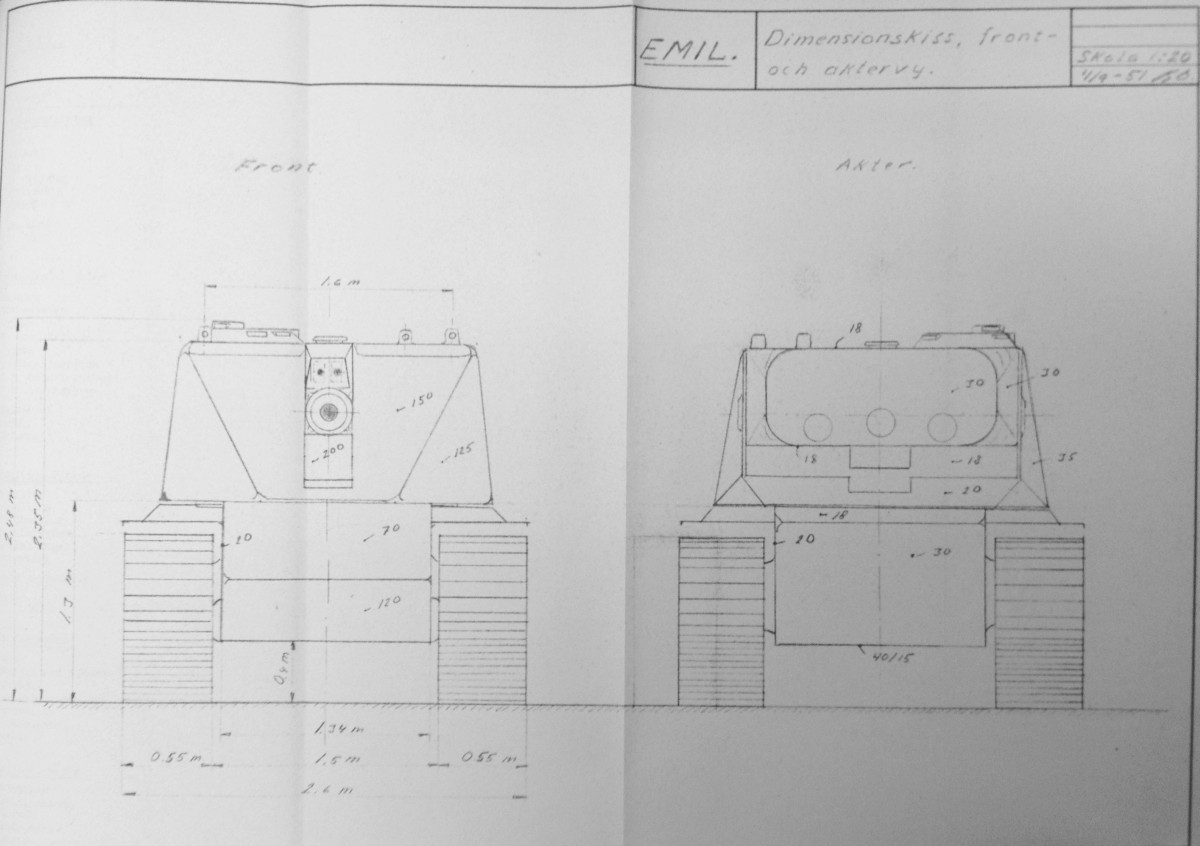
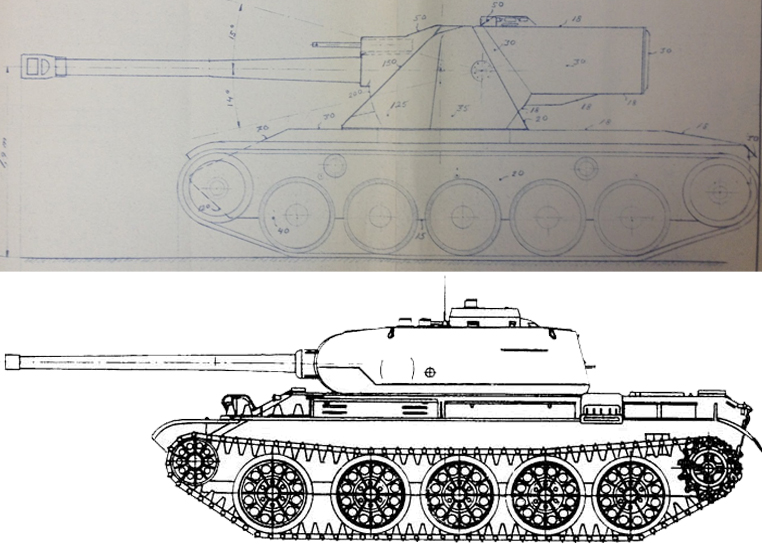
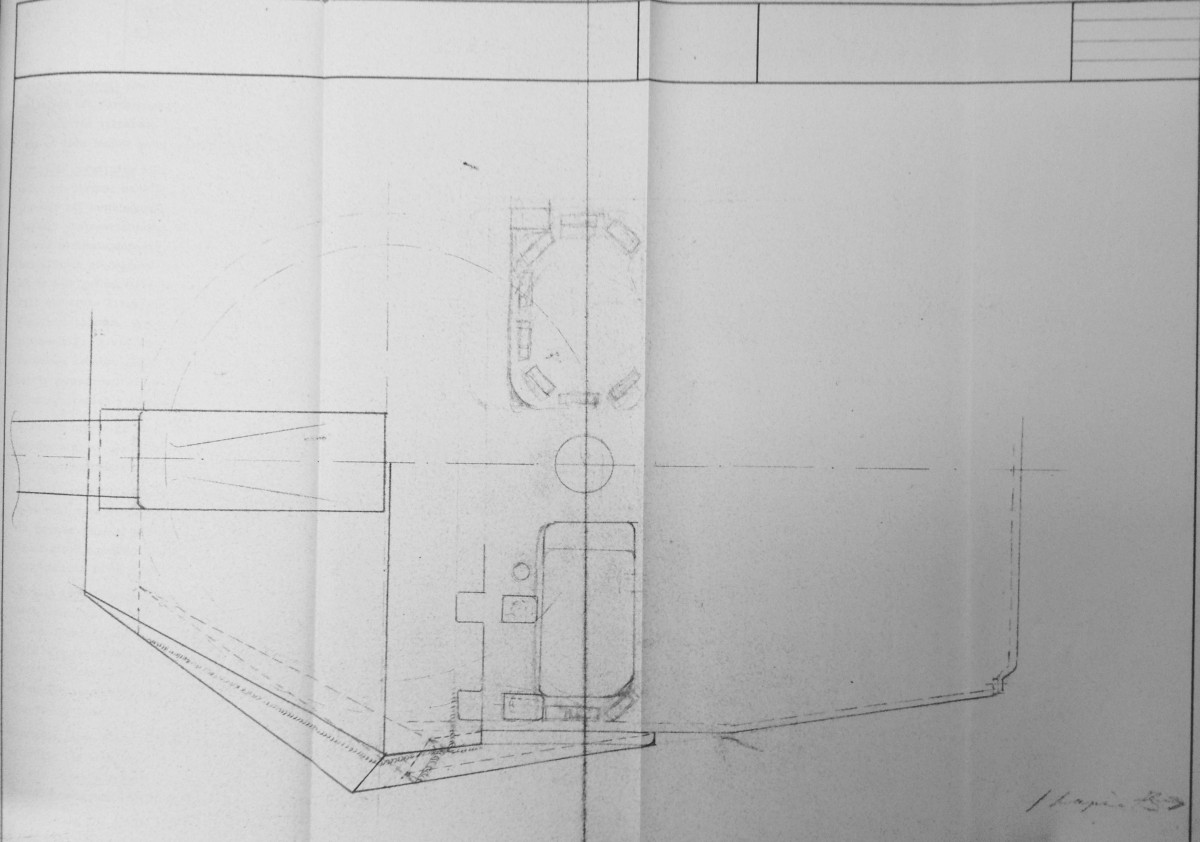
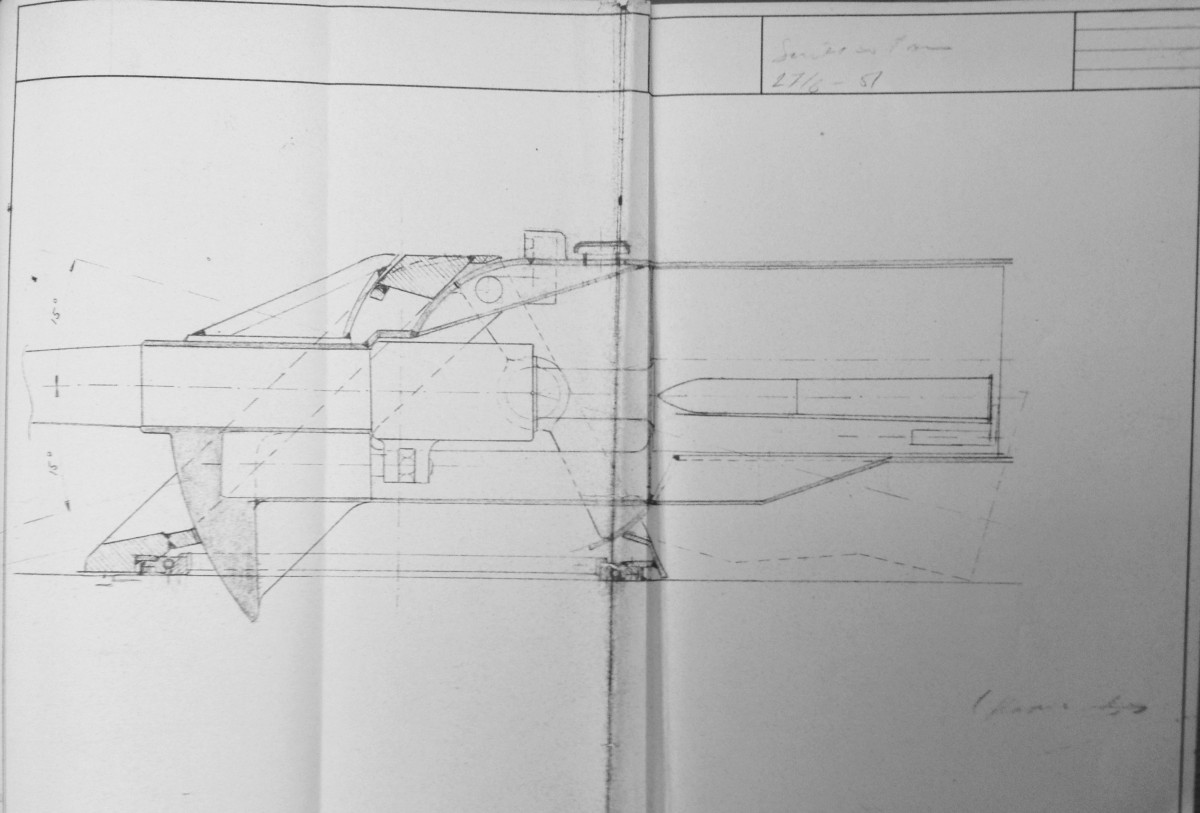
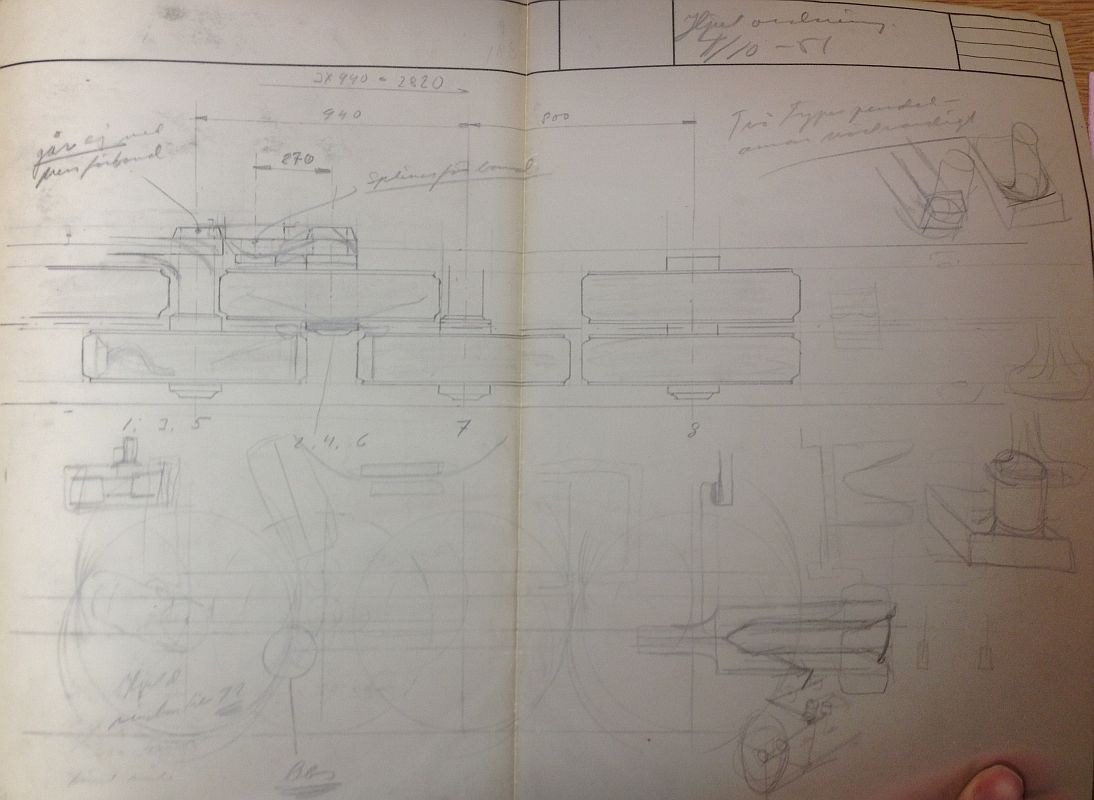

they look sexy I wish my country canada was more involved in tank development
now i see it doesn’t have an oscillating turret like the french!
It actually does, but it’s covered at the front and sides by armor plates affixed to the base of the turret, unlike the french that have the oscillating part out in the open.
I would like to know what color these tanks are.
Tanks in swedish service from this period would have been painted olive green
Baby AMX 50 B, so cute :D
Looking at the stats I somehow rather see it as a T9 Medium in WoT Terms. If the gun was weaker then maybe a T8 med.
Yes i see your point. The vehicle really is more of a med than a heavy, but it was reffered to as a heavy and it could fill that role. And without it as a heavy we would have no tier 8 heavy for the european tree ( or the swedish tree for that matter)
Afaik AMX 50B has also 14deg gundepression. Only WG decided to not give a fuck about it.
No silentstalker got that wrong, he even adressed that. Its the gun elevation that was14dg not the depression
In WoT terms, effetive armour (AP/APCR/HEAT) =
LFP 183/194/203
UFP 154/172/187 (though just 2 degrees of upward angle or 25 degrees of side angle ricochets AP/APCR)
Turret front 196/205/212
Gun shield looks pretty complex, but it’s nominally 200mm thick
Turret cheeks 221/239/254 (http://ftr.wot-news.com/wp-content/uploads/2014/06/PZVDMwb.jpg shows ~60 degrees of horizontal angle on top of 10 degrees of vertical angle)
This thing is waaaaay overpowered for tier VIII unless it is artificially crippled with insanely poor soft stats. It has a 120mm autoloader, fast medium level mobility, great profile/camo, amazing gun depression, and strong frontal armour (the UFP is weak, but becomes irrelevant whenever it is even slightly angled or there is a little slope or obstacle to abuse), though its sides and top are paper.
whyboner.jpg
A mobile med/heavy hybrid with the size of a t44, burst firepower of French, adequate depression(propably around 8-10 degrees) and with an armored turret???
YES PLEASE
Tier 8 heavy? Please tell me your joking. Try tier 9.